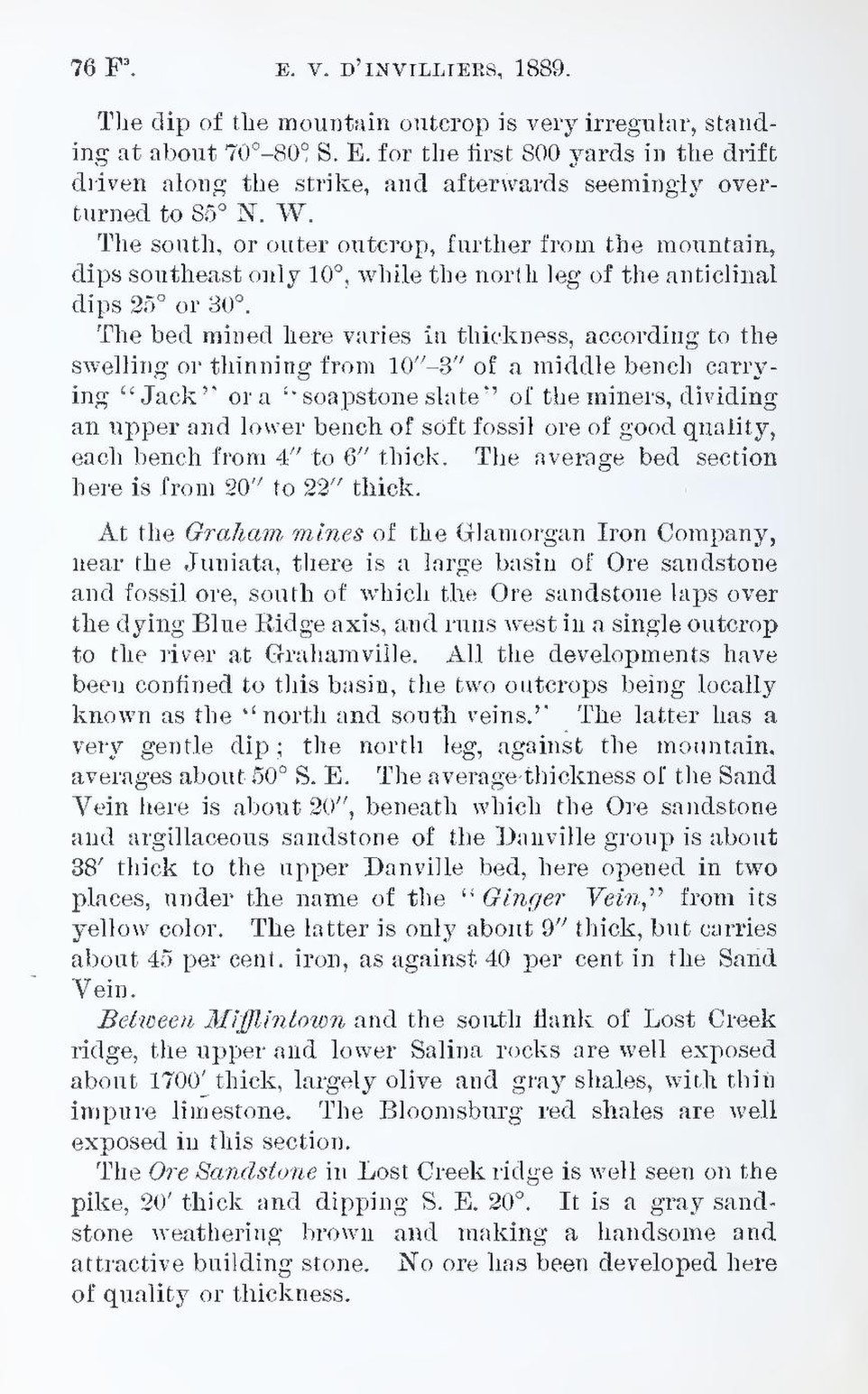The dip of the mountain outcrop is very irregular, standing at about 70°-80° S. E. for the first 800 yards in the drift driven along the strike, and afterwards seemingly overturned to 85° N. W.
The south, or outer outcrop, further from the mountain, dips southeast only 10°, while the north leg of the anticlinal dips 25° or 30°.
The bed mined here varies in thickness, according to the swelling or thinning from 10″-3″ of a middle bench carrying “Jack” or a “soapstone slate” of the miners, dividing an upper and lower bench of soft fossil ore of good quality, each bench from 4″ to 6″ thick. The average bed section here is from 20″ to 22 thick.
At the Graham mines of the Glamorgan Iron Company, near the Juniata, there is a large basin of Ore sandstone and fossil ore, south of which the Ore sandstone laps over the dying Blue Ridge axis, and runs west in a single outcrop to the river at Grahamville. All the developments have been confined to this basin, the two outcrops being locally known as the “north and south veins.” The latter has a very gentle dip; the north leg, against the mountain, averages about 50° S. E. The average-thickness of the Sand Vein here is about 20″, beneath which the Ore sandstone and argillaceous sandstone of the Danville group is about 38′ thick to the upper Danville bed, here opened in two places, under the name of the ‘‘Ginger Vein,” from its yellow color. The latter is only about 9″ thick, but carries about 45 per cent. iron, as against 40 per cent in the Sand Vein.
Between Mifflintown and the south flank of Lost Creek ridge, the upper and lower Salina rocks are well exposed about 1700′ thick, largely olive and gray shales, with thin impure limestone. The Bloomsburg red shales are well exposed in this section.
The Ore Sandstone in Lost Creek ridge is well seen on the pike, 20′ thick and dipping S. E. 20°. It is a gray sandstone weathering brown and making a handsome and attractive building stone. No ore has been developed here of quality or thickness.
